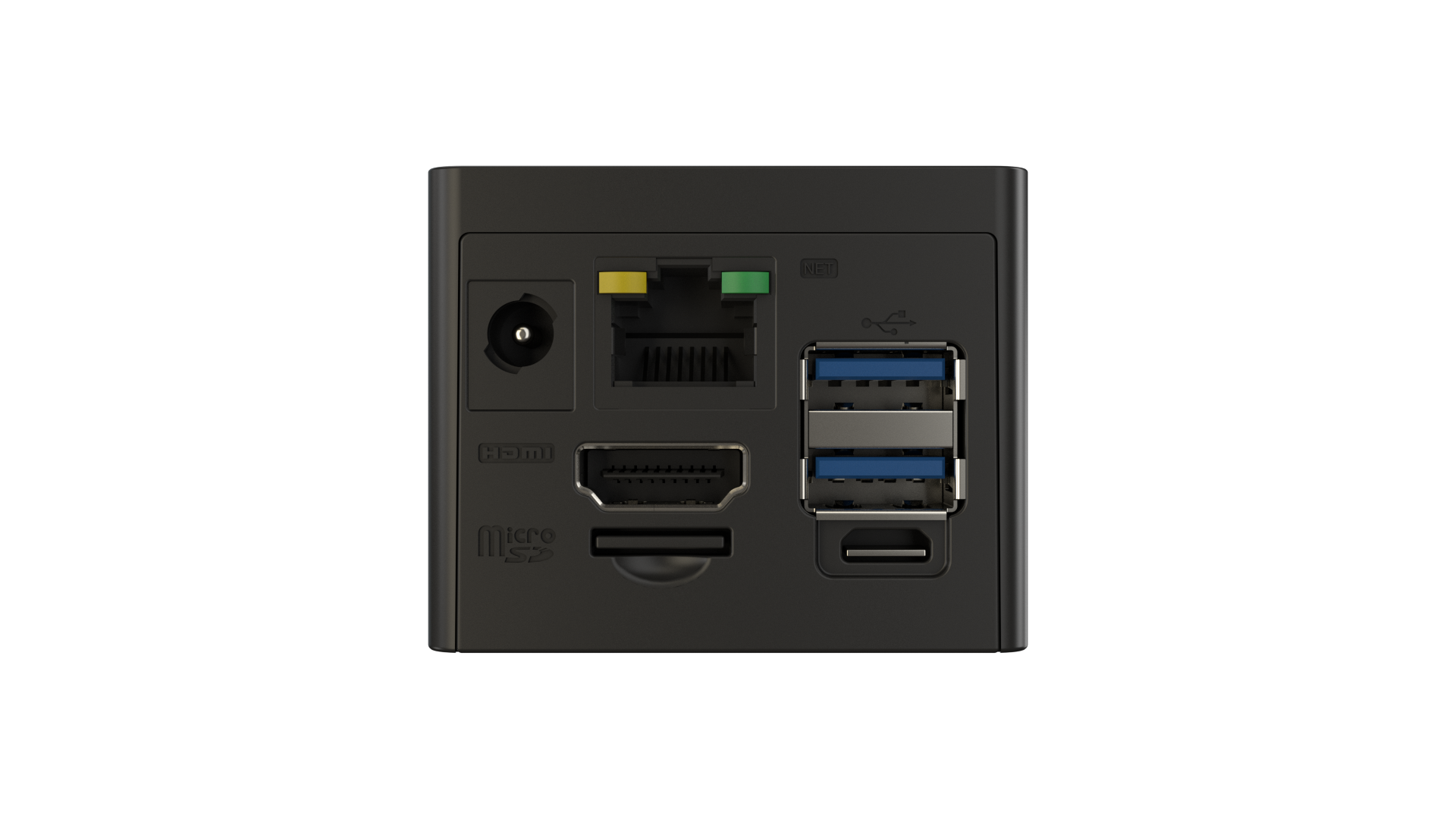Cubox-M Aims To Be Your Raspberry Pi Alternative
2 x 2 x 2
Update 2/11/2021 05:18 ET: This article has been updated to include wireless connectivity details that were not present in the press release but have since been added to the product website.
Original Article
Are you old enough to remember the Rubik's Cube? Well, SolidRun's latest SBC, the Cubox-M, may just remind you of that 1980's sensation. Announced today by SolidRun, the Cubox-M is a 2-inch cube SBC with either a dual- or quad-core Arm processor packaged into a compact and rather slick plastic enclosure, so there are no bare boards on display, unlike the Raspberry Pi.


Being just 2 inches cubed does not mean that the Cubox-M lacks power. The onboard NXP i.MX8M Plus Dual- / Quad-core Arm Cortex A53 can run at up to 1.8Ghz and features "an integrated neural processing unit for enhanced AI and machine learning capabilities at the edge" (per SolidRun's press release).
Cubox-M comes with 4GB of LPDDR4-4000 RAM as standard, but this can be configured to up to 8GB of LPDDR4-4000, and given the size of the board, this is not user-configurable.
Boot media and storage are handled via 8GB eMMC flash storage, and a MicroSD slot is around the back. Due to the size of the Cubox-M, there's a limited selection of ports. There are only two USB 3.0 ports and a single full-size HDMI 2.0 port providing up to 1080p at 60Hz. A Gigabit Ethernet port provides wired network connectivity,
and wireless comes in the form of 802.11 ac/a/b/g/n and Bluetooth 5.0. Just under the USB 3.0 ports is what looks to be a micro USB port, but we have not found any documentation to indicate this port's purpose. It could be a USB OTG port, or a means to flash a new operating system to the onboard eMMC storage.
What operating systems are supported? Well, at the time of launch, we are told that there is support for Linux Kernel 4.9 and above, so in theory, distributions such as Ubuntu, Fedora, Manjaro are compatible – but this remains to be seen. Android 11 is also compatible with Cubox-M.
Get Tom's Hardware's best news and in-depth reviews, straight to your inbox.
The front of Cubox-M is relatively sparse, with just a power button on display. Still, there is an indicator LED and an infrared receiver for use with a remote control, which is available separately.
Power is provided via a 12V DC supply. Still, there is an optional Power over Ethernet upgrade, which means that Cubox-M can be embedded into a remote location without the need for a dedicated power supply.
The Cubox-M will retail for $99, and the POE upgrade will be from $120.

Les Pounder is an associate editor at Tom's Hardware. He is a creative technologist and for seven years has created projects to educate and inspire minds both young and old. He has worked with the Raspberry Pi Foundation to write and deliver their teacher training program "Picademy".
-
blitz120 According to their web page (https://www.solid-run.com/fanless-computers/cubox/#cubox-m), the Cubox-M has both wifi and bluetooth connectivity.Reply -
jcalvarez More power? Cortex A72 is way faster than Cortex A53, and the Pi 4 is quad core by default. I can get a Pi 400 for that money, and have some change left.Reply -
Glock24 Reply
There are much better alternatives to the RPi, for example the Odroid N2/N2+.jcalvarez said:More power? Cortex A72 is way faster than Cortex A53, and the Pi 4 is quad core by default. I can get a Pi 400 for that money, and have some change left. -
deesider Reply
Certainly there are higher performance alternatives...Glock24 said:There are much better alternatives to the RPi, for example the Odroid N2/N2+. -
T-H_Reader According to https://shop.solid-run.com/product/SRMP8QDW00D01GE008X00CE/The specs and pricing on this article are completely wrong.Reply
For 99 USD, it's a 1Gb version and 160 USD for the 4Gb - with no mention of an 8Gb version.
If the article is right, then rework the links included - otherwise this is merely advertising fluff, which I expected less of from TH. -
jcalvarez Reply
When I look at a Linux board I look at hardware/software/documentation/price I have yet to see one that combines those 4 criteria better than the RPI.Glock24 said:There are much better alternatives to the RPi, for example the Odroid N2/N2+.
Yes, there are plenty of other boards out there, some more powerful than the RPI. But, in my opinion, nothing come close to the above mentioned criteria. -
Glock24 Replyjcalvarez said:When I look at a Linux board I look at hardware/software/documentation/price I have yet to see one that combines those 4 criteria better than the RPI.
Yes, there are plenty of other boards out there, some more powerful than the RPI. But, in my opinion, nothing come close to the above mentioned criteria.
Yes RPi has "better" (more widely available works be a better term) software support, but there are certain things that you should consider.
For instance they insist on using propietary hardware work closed source blobs. Whatever you install on your RPi does not directly control the hardware, as there's already an OS in between (the RPi "firmware").
The Raspberry Foundation has never developed anything and has never contributed anything to the open source community. They are supposed to be a non-prifit, but I bet they've made a ton of money. They do unfair competition as they don't pay any taxes (because they are a "non-profit for education") do their costs are lower and they can sell all lower prices.
Just search why Armbian does not support RPi and you'll learn a lot of things about this "Foundation".